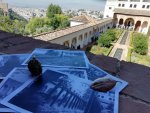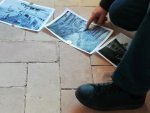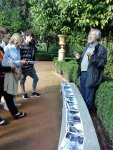accueil site > 45. Archives > Paysage et patrimoine > 12. Pedagogic tools > 17. Pedagogic tools > 0992. 20 Time in the garden
-
45. Archives
-
Paysage et patrimoine
-
01. Fiches pédagogiques
Disciplines
-
01. Teaching materials
Disciplines
-
02. Jardin sans frontière : une école pour développer les compétences -clés en Europe
- 04. Partenaires
- 05. Rencontres transnationales
- 14. À l’école du jardin. Mobilités de formation dans les jardins d’Europe
- 15. À l’école européenne du jardin. Paroles de formateurs sur leurs formations "entre pairs"
- 16. A l’école auropéenne du jardin. Paroles d’apprenants sur leurs mobilités Erasmus+
- 19. Petit glossaire "européen" du jardin
- 20. Dissémination
- 21. Exploitation locale du projet
- 03. Un nouvel Erasmus+ : Le bleu européen comme étendard contre l’exclusion des adultes
-
09. Erasmus+ partenariato
-
Cammini del Blu in Europa
- 01. Incontri transnazionali
- 05. Progetti blu di partners
- 10. Percorsi europei del Blu
- 20. Storie blu
- 40. Disseminazione
- 43. Transcultural Carpet Blue
- 45. Missive blu
- 46. Glossario blu
- 47. Schede didattiche "Pedagogia del colore blu in Europa"
- 48. Illustrazioni delle schede didattiche : Mostra delle opere degli studenti
-
Giardino senza frontiere. Una scuola per lo slivuppo di competenze chiave in Europa
- 04. Partners
- 05. Riunioni transnazionali
- 14. Alla scuola del giardino. Mobilità di formazione nei giardini d’Europa
- 15. Alla scuola del Giardino. Parole di formatori sul loro addestramento "tra pari"
- 16. Alla scuola del giardino. Parole dei discenti sul loro Erasmus + Mobilità
- 19. Piccolo glossario europeo del giardino
-
Cammini del Blu in Europa
-
11. Erasmus+ Partnership
- 01. Transnational Meetings
- 05. Blue Projects of partners
- 07. European roads of the Blue
- 10. Blue stories
- 40. Dissemination
- 43. Transcultural Carpet Blue
- 45. Blue Missives
- 46. Blue Glossary
- 48. Roads of the blue : the file
- 50. Illustrations of the pedagogic file : exhibition of works of learners
-
51. Garden Without Borders : A School for Developing Key Competences in Europe
- 04. Partners
- 05. Transnational meetings
- 14. At Garden School. Training mobilities in the gardens of Europe
- 15. At Garden School. Words of trainers on their "peer-to-peer" training
- 16. At Garden School. Learners’ words about their mobility Erasmus +
- 19. Small European glossary of the garden
- 20. Dissemination
-
11. Partenariats Erasmus+
-
01. Les chemins du bleu en Europe
- 01. Rencontres transnationales
- 05. Projets bleus des partenaires
- 10. Routes du Bleu en Europe ...
- 20. Histoires Bleues
- 40. Dissémination
- 43. Transcultural Carpet Blue
- 45. Missives bleues
- 46. Glossaire bleu
- 47. Formation pédagogique : fiches pédagogiques et référentiel de compétences clés et transversales
- 50. Illustrations des fiches pédagogiques : exposition des travaux des apprenants
-
01. Les chemins du bleu en Europe
- 12. Pedagogic tools
- 17. Fiches pédagogiques
- 17. Schede Pedagogiche
-
01. Fiches pédagogiques
- 05. Livre d’or des formations
- 07. Livre d’or des formations Comenius - Grundtvig
- 10. National
- 20. International
-
Paysage et patrimoine
0992. 20 Time in the gardendimanche 21 octobre 2018
PROJECT
The activity is carried out in a garden with the help of images reproducing the same garden over various historical periods. It is helpful to understand how the appearance of a garden changes year by year. The ideal situation is to develop the activity in a historical garden of more than a century because there the changes are more visible. A moment of debate on the reasons why the changes have occurred may be foreseen.
PUBLIC
This methodology has been created and experimented in the Botanical Garden of the University of Granada, Spain, within the frame of the training mobility from October 16 to 20, 2018
![]() by the students with learning difficulties, aged 16-18, from the high school Agrupamento de Es colas Joao De Deus of Faro, Portugal and the young learners of the Associazione Culturale Acquamarina, Trieste, Italy
by the students with learning difficulties, aged 16-18, from the high school Agrupamento de Es colas Joao De Deus of Faro, Portugal and the young learners of the Associazione Culturale Acquamarina, Trieste, Italy
![]() by the European (French, Italian, Portuguese and Spanish) teachers of the project in their peer-to-peer training course who consider important to observe how this pedagogical method is applied and its impact on the development of their learners’ transversal and key competences.
by the European (French, Italian, Portuguese and Spanish) teachers of the project in their peer-to-peer training course who consider important to observe how this pedagogical method is applied and its impact on the development of their learners’ transversal and key competences.
The activity can be developed with learners of different levels, from primary school to university.
KEY COMPETENCES
![]() Communication in the mother tongue
Communication in the mother tongue
![]() Scientific and mathematical competences
Scientific and mathematical competences
![]() Social competences and citizenship
Social competences and citizenship
![]() Humanist culture and expression of sensitivity
Humanist culture and expression of sensitivity
OBJECTIVES
![]() To learn how to recognize the characteristics of gardens and plants
To learn how to recognize the characteristics of gardens and plants
![]() To motivate the interest in the history of sites
To motivate the interest in the history of sites
![]() To develop the ability to observe nature
To develop the ability to observe nature
GARDENS EXPLORED
![]() Carmen de los Martires, Granada, Spain : the ’French’ gardens and ’de las Palmeras’
Carmen de los Martires, Granada, Spain : the ’French’ gardens and ’de las Palmeras’
![]() Generalife, Granada, Spain : le Patio de la Acequia
Generalife, Granada, Spain : le Patio de la Acequia
MATERIALS
![]() Printed photos with different views of the gardens during different historical moments. These must be silent images without textual indications (title, date, place, author, technique)
Printed photos with different views of the gardens during different historical moments. These must be silent images without textual indications (title, date, place, author, technique)
![]() A reference document with the missing data (author, title, date, place, technique, original collection)
A reference document with the missing data (author, title, date, place, technique, original collection)
DEVELOPMENT
To give the guideline ; to find out the chronology of the views of the garden.
Several complementary possibilities can be exploited with regard to the level of learning
![]() through the silent images, the learners are invited to locate the point of view of their creation and to compare the present reality with that in the image (change of vegetation, plants, change in the size of the trees, change of the paths lay-out, etc.)
through the silent images, the learners are invited to locate the point of view of their creation and to compare the present reality with that in the image (change of vegetation, plants, change in the size of the trees, change of the paths lay-out, etc.)
![]() To try and rank the images according to chronological criteria, trying also to guess the dates. Follow up : the references with data will be handed out in order to confirm and evaluate the success of the activity
To try and rank the images according to chronological criteria, trying also to guess the dates. Follow up : the references with data will be handed out in order to confirm and evaluate the success of the activity
![]() If changes in the layout of the garden are noticed, invite the learners to try and rebuild the old site using coloured ribbons to design the old framework of the ground
If changes in the layout of the garden are noticed, invite the learners to try and rebuild the old site using coloured ribbons to design the old framework of the ground
EXTENSION AND ALTERNATIVES
Another way to develop the activity, which is more demanding for the learners, is beginning with the analysis of the images and continuing with the elaboration of the plans related to the various evolutions.
Should some gardens have maintained the same layout during the course of their history, replace the activity with elevations of sections accompanied by drawings of the change of size and the inclusion of the different plantations over the years.
As regards the examples proposed at Carmen de los Martires
![]() the ’French garden’ is suitable for the drawings of elevation of section
the ’French garden’ is suitable for the drawings of elevation of section
![]() the ’Garden of Palm Trees’ is suitable both for these drawings and the modifications of the layout on a plan.
the ’Garden of Palm Trees’ is suitable both for these drawings and the modifications of the layout on a plan.
EVALUATION
It takes into account the ability to :
![]() Communicate orally and in writing in the mother tongue. Use the language appropriately to express idea, knowledges, opinions
Communicate orally and in writing in the mother tongue. Use the language appropriately to express idea, knowledges, opinions
![]() Improve scientific and technological basic skills. The learner must be able to recognise the evolution of the plants in the garden as regards the passing of time (growth, felling, seasonal changes of flowers, etc.)
Improve scientific and technological basic skills. The learner must be able to recognise the evolution of the plants in the garden as regards the passing of time (growth, felling, seasonal changes of flowers, etc.)
![]() Develop one’s own awareness and personal cultural expression. Improvement of the personal knowledge of the historical and artistic reality of a garden thanks to the perception enhanced by change
Develop one’s own awareness and personal cultural expression. Improvement of the personal knowledge of the historical and artistic reality of a garden thanks to the perception enhanced by change
![]() Learn to learn
Improve the learners’ abilities concerning observation, problem solving, visual expression
Learn to learn
Improve the learners’ abilities concerning observation, problem solving, visual expression
AUTHORS
![]() Manuel Casares Porcel, José Tito Rojo
Manuel Casares Porcel, José Tito Rojo
![]() Botanical Garden of the University of Granada, Granada, Spain
Botanical Garden of the University of Granada, Granada, Spain
TRANSLATER
Mary Gino
Association Acquamarina, Trieste, Italie















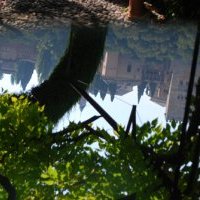
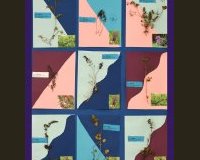
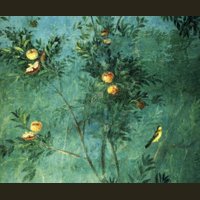
 Version imprimable
Version imprimable
